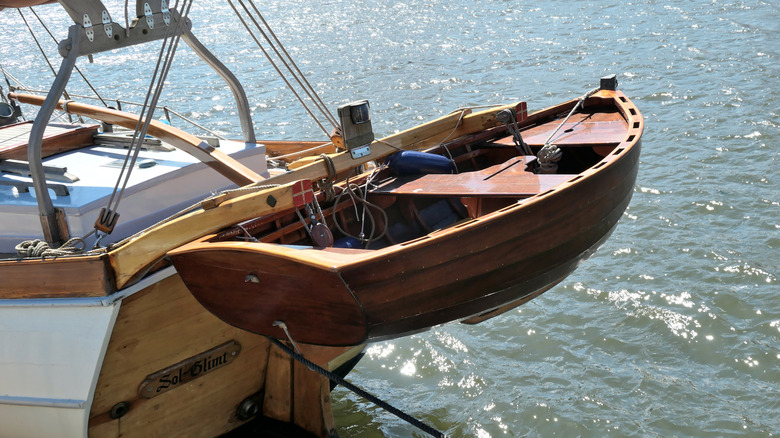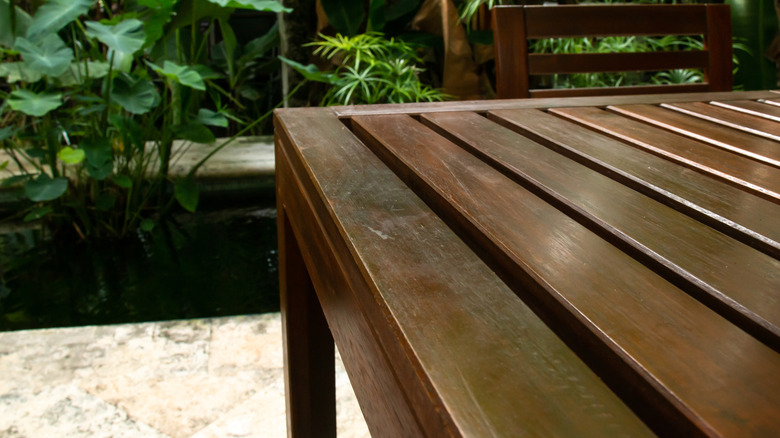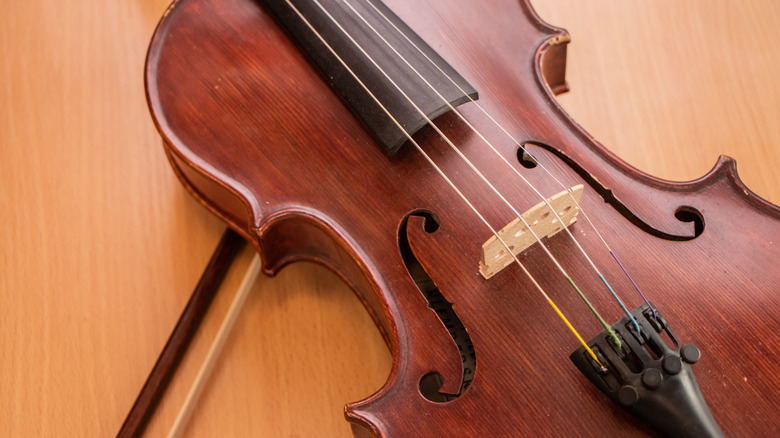When To Use Mahogany Instead Of Walnut Wood For Your Projects
If walnut and mahogany were people, they'd probably be at war. Not because there are major differences inherent in the woods, but because the narcissism of small differences would almost guarantee that they would constantly be at each other's throats. Because in truth, these two premium hardwoods are quite similar in most ways. Those small differences, however, can make a big difference in your project.
Both mahogany and walnut are commonly used for high-end woodworking and furniture-making. Both are durable, stable, weather-resistant hardwoods. "Genuine" mahogany, also called Honduran mahogany, has a Janka hardness rating of around 800, while walnut has a hardness rating of 1010. From that, many conclude that walnut is harder than mahogany. But other common varieties of mahogany are significantly harder: Sapele scores 1500 on the Janka scale, while African scores 1100 and the less common Santos gets a stellar 2400.
You see the same effect in price. Conventional wisdom in the past few years has been that walnut is the more expensive of the two, but again, it depends on the variety. Hearne Hardwoods data puts the average price of 4/4 FAS (that is, 1-inch thick, highest quality) walnut at $17.21 per board foot, while the same grade of genuine mahogany averages $26.75/BF. Yet African mahogany comes in at $8.33/BF and Sapele runs $9.80/BF — significantly less than walnut. The cost of walnut might be driven up somewhat by its shorter lengths and the fact that it typically contains more sapwood and knots, both of which suggest higher rates of waste.
Use mahogany for outdoor projects
So where are the differences that will help you decide when to use mahogany or walnut for your projects? One is mahogany's famous resistance to weather. Both walnut and mahogany are actually quite good when it comes to handling moisture without much deformation, and they also handle insects quite well. But a few of the common uses of mahogany — in shipbuilding and other marine applications, for example — illustrate its superior suitability for outdoor projects. Most of this boils down to the wood's handling of moisture and seasonal humidity changes without shrinking and warping. Mahogany's resistance to rot (it has even been found suitable for ground contact) also means it can be used for outdoor furniture, decking, and siding.
Mahogany has a few other tricks up its sleeve when it comes to durable, long-lasting outdoor projects. It tends to hold finishes, like paint and polishes, very well. This means that it's likely to last longer without the need for as much maintenance compared with many other hardwoods. And because it's compact and dense, it tends to hold nails and screws better than less dense options. This is always a plus when choosing a wood for furniture or structures that must withstand the moisture and temperature changes of the great outdoors, which can loosen nails and screws in no time.
Use mahogany when its clear grain is suited to your project
That mahogany and walnut are woods used for high-end furniture, cabinetry, and woodworking doesn't mean they look the same. Walnut is a darker brown hue that tends to stay fairly consistent over time. It has a fine, open-grain structure that often veers into irregularities like swirls, waves, curls, and yes, knots. And the much lighter sapwood that's often a part of even the highest quality walnut boards contributes to its multi-tonality, which can lend an inconsistency — and even a touch of robustness — that's not evident in mahogany.
Mahogany is clearer and has a closer, tighter, and higher-density grain, with light, even lines giving a smooth impression. It's usually described as a reddish-brown that is often preferred over walnut, but it's important to note that mahogany can change over time to a lighter greyish hue. The finer, less varied texture of mahogany might be more suitable for projects that benefit from its regularity — smaller projects, perhaps, or ones where variations in grain and wood color might be distracting. For example, a walnut floor might be perfectly acceptable, and wall panels might benefit from being less prominently figured. Given its hardness, you might want to consider Santos mahogany, one of the longest-lasting flooring woods, but either will elevate most rooms.


